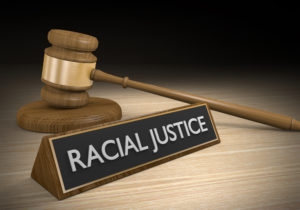As I near a final publication date for my latest ‘ripped from the headlines novel, Betrayal in Black, life continues to imitate art, as another African American citizen is shot by police.
Another black man was recently gunned down by a white police officer, this time in Charlotte, North Carolina.
On the morning of March 25, 2019, police received two separate 911 calls stating that an armed man entered a Burger King. The first caller said the man walked behind the counter with a gun and pointed it at an employee. A second caller reported that someone approached her vehicle and pulled a gun as she waited for her food.
Two officers were dispatched, one male and one female. A description of the individual was provided to both officers. When the officers arrived at the Burger King, a man, presumably the suspect, was squatting next to an open front passenger door of a vehicle parked in front of the restaurant. The officers claim they asked the man several times to drop his gun. A short time later, the female officer shot the suspect twice, stating she felt an imminent, deadly threat.
Body cam footage confirms that the officers yelled to the suspect to put his gun down, while he remained in a squatted position. About 30 seconds into the confrontation, the man said, “I heard you the first time.” The camera shows the suspect reaching into his pocket and pulling an object out. The viewer cannot see the object clearly until it is lowered to the ground. Suddenly, after the object was placed on the ground, two shots ring out, and the man’s body slumps against the open car door. The wounded man said: “You told me to . . .”
The female officer approaches the suspect and retrieves a gun off the ground. During the aftermath, no officer provided medical attention and almost four minutes elapsed before medical personnel arrived. The suspect was transported to an area hospital where he was pronounced dead.
The shooter maintained she believed the man was an imminent threat. Many citizens, after viewing the video footage, believe the deceased was complying with police orders when the female officer shot him. According to some witnesses, the victim was not the same man the 911 calls were about. The tragic event has sparked more questions than “Was the shooting justified?”
According to reports, neither officer completed Crisis Intervention Training (CIT), which prepares officers on how to de-escalate crisis situations with non-violent and non-confrontational techniques. Apparently, the Charlotte-Mecklenburg Police Department does not mandate that officers have CIT. In fact, according to reports, only 36% of the entire department has completed the training.
Why didn’t the male officer have video footage of the incident, despite a requirement that all officers on duty wear body cameras? If he had, maybe the second video could have provided more information or a better view of the events. Was the officer wearing a camera? Did he fail to activate it and, if so, was this inadvertent or deliberate?
Is this a case of a “shoot first, ask questions later” mentality? The narrative here, as it has been for police officers across the country when shooting unarmed people of color, is the same – ‘we had no other choice; we felt imminent danger.’ Why do the police feel so threatened in these situations? Why the need for deadly force? What did this victim do to deserve the death penalty?
This tragedy serves as a painful reminder that our country still has a long way to go to achieve racial justice and equality. The law enforcement community needs to re-evaluate its standards, train officers in de-escalation procedures, reduce the threat of violence, and search for alternatives to pulling a trigger. Lesser instruments such as batons, tasers, or chemical sprays should come first. Deadly force should be a remote or last alternative. Protect and serve must be more than a motto— the law enforcement community must change its culture and advocate for legislation and policies that protect everyone, regardless of race, religion, or political beliefs. Someday soon, I’d like to stop hearing about citizens, usually minorities, losing their lives because a police officer misjudged the danger he or she faced.
There is no guarantee, nor straightforward way, to relegate racism to the pages of history; we must change the way we think and feel, what we say, and what we do. We can start by expressing outrage over incidents like this one. You don’t have to be black to believe that black lives matter. “Black Lives Matter” does not identify or proclaim the virtues or wrongdoings of any specific social identity. It is an outcry for equal rights – for all people.
Citizens must speak up in their own communities, keep a dialogue going and communicate with local law enforcement officials. Communication between police and citizens may be the most essential tool available to bring about change and prevent needless tragedy.
@thumbnail.jpg)
Experienced attorney, lawsuit funding expert, certified civil mediator, and award-winning author of the Zachary Blake Legal Thriller Series. The series features super-trial lawyer Zachary Blake handling "ripped from the headlines" legal and political issues of the day. The series currently consists of Betrayal of Faith, Betrayal of Justice, Betrayal in Blue, Betrayal in Black, and Betrayal High, with a sixth Zachary Blake novel due out later this year. To learn more about these topical social justice legal thrillers. please visit markmbello.com. Mark is a member of the State Bar of Michigan, a sustaining member of the Michigan Association for Justice, and a member of the American Association for Justice.










Comments for this article are closed.